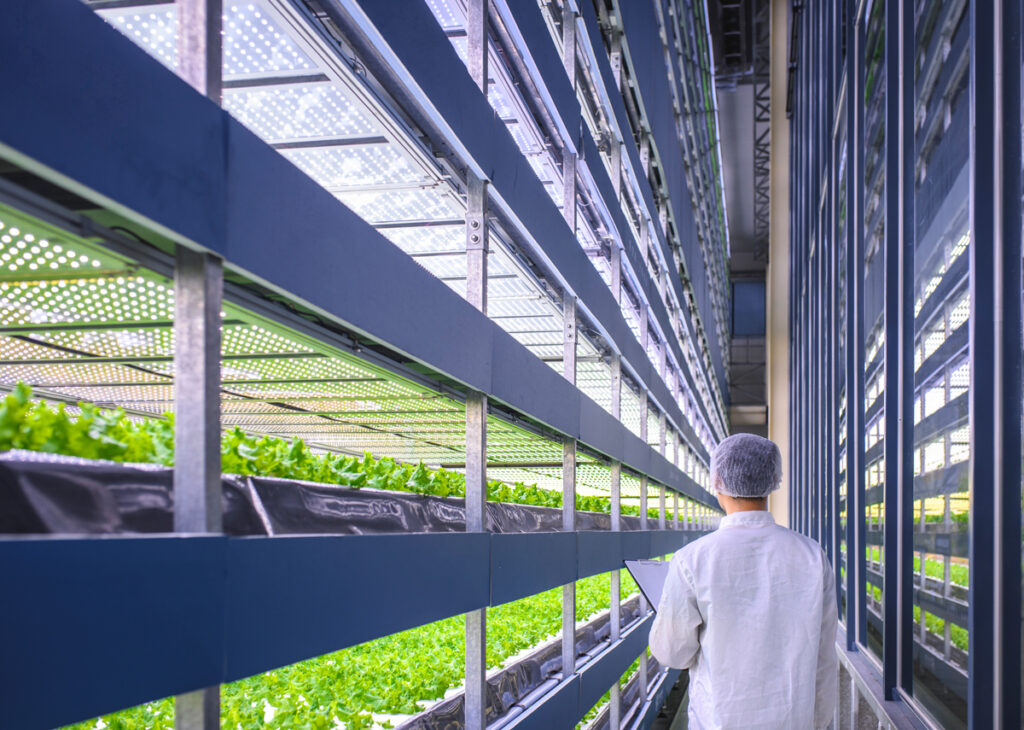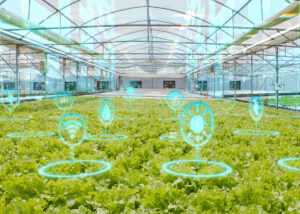The environmental impact of agriculture is a hot topic of discussion at the moment, with the World Wildlife Fund (WWF) stating that “agriculture is the leading source of pollution in many countries.” Tie this in with the increased water consumption and land conversion needed to feed a growing global population; you have a pretty poor picture.
Vertical farming is being touted as the future of agriculture, a more sustainable way for food crops to be grown. Still, its many benefits must be weighed carefully against the increased power needed to heat and light the space. Many scientists are working hard to reduce this reliance on power, meaning vertical farming will soon be more sustainable and profitable.
As it stands, however, here are four ways that vertical farming is benefitting our environment:
#1 Reduction in the degradation of arable land
Vertical farming does not need arable land to succeed, as it focuses on in-house plant growth. This focus tackles two substantial environmental impacts of traditional agriculture: biodiversity loss and deforestation. Conventional farming techniques have been responsible for around 80% of deforestation on a global scale.
Moving from conventional farming towards vertical farming should give currently degraded land some breathing space, allowing it the time to regenerate itself and allowing biodiversity and ecosystems to flourish again.
#2 Reduction in water pollution
Conventional farming techniques rely on fertilisers to improve crop yield. These tend to be chemical products, which can be washed into natural water sources such as rivers and the sea. This process is called eutrophication, which can cause an increase in the growth of algae and a reduction in the amount of oxygen in the water, causing fish to die.
Again, using vertical farming instead of conventional farming techniques means the chances of eutrophication happening are virtually nonexistent. Crops are grown in a closed environment, meaning that no fertilised water can flow out – instead, the water used is purified and recycled, giving you a better return on investment.
#3 Reduction in fossil fuel emissions
Conventional farming relies heavily on large machines for seed sowing, fertiliser spreading and harvesting. The problem is that these large machines rely on fossil fuels to run, and fossil fuels have a devastating effect on the environment.
Although growing plants in a greenhouse don’t rely on heavy machines, it does involve drawing on substantial heating resources at some points during the year for heating purposes. Electric heating can be costly, so some farmers opt for oil or wood chip heating – but the problem is that these fuels also emit greenhouse gases.
Moving crop production into a vertical farm removes the need for heavy machinery and greenhouse gas-emitting heating. If you insulate your building well, you shouldn’t need any additional heat source other than LED grow lights.
#4 Reduction in the use of fertilisers & pesticides
The risk of pest infestation is dramatically reduced in vertical farming, as crops are grown in a sealed environment, well protected against the outside world. This means there is no need to worry about fungal disease, which dramatically reduces the need for chemical fungicides.
Commercial farming also frequently relies on chemicals to prolong the shelf-life of crops. With vertical farming allowing crops to be grown in an urban setting, time-to-shelf is also reduced, so there is no need for preservatives to be added before transport.
As you can see, vertical farming benefits our environment by reducing the degradation of arable land, reducing water pollution, reducing fossil fuel emissions, and reducing the use of fertilisers and pesticides.
If you want to learn more about how Gelponics can help you when you are setting up a vertical farm, please call us on 07867 502247 or email us at contact@aehinnovativehydrogel.com


